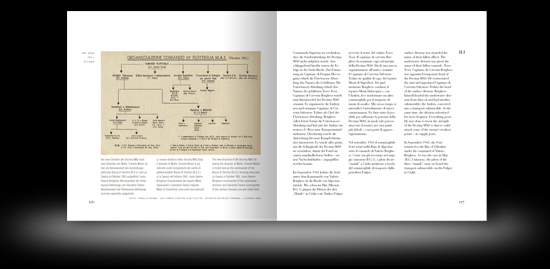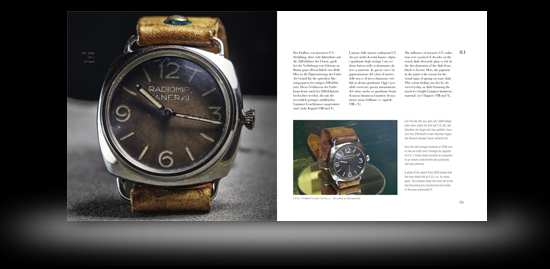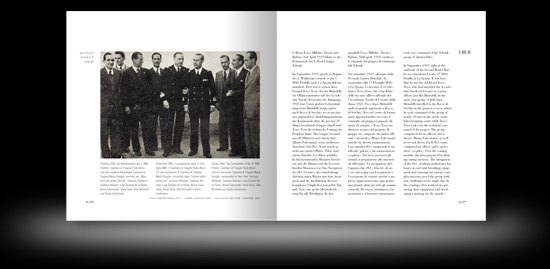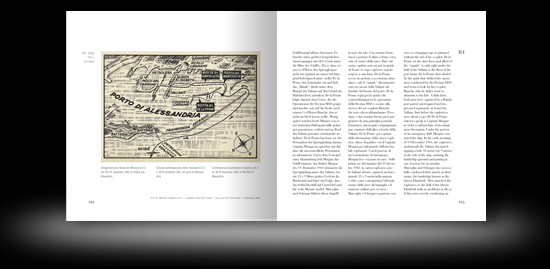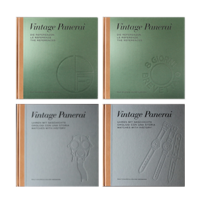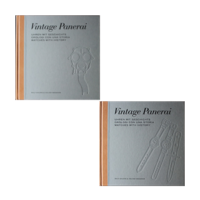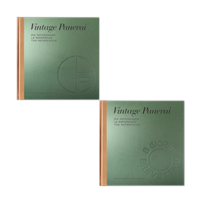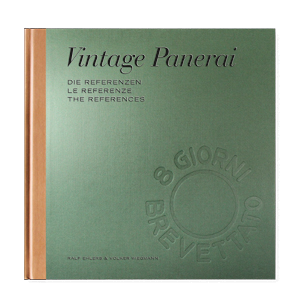Tag: 696
26 March 1941 – today in history…
by Volker on Mar.26, 2025, under Allgemein
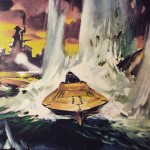 During the winter of 1940-1941 the human torpedo attacks were suspended, at least until the following spring. A detachment of MT explosive boats was based in the Dodecanese, where it trained under the command of Vittorio Moccagatta on the island of Leros with the objective of attacking Souda Bay and the British traffic to Greece.
During the winter of 1940-1941 the human torpedo attacks were suspended, at least until the following spring. A detachment of MT explosive boats was based in the Dodecanese, where it trained under the command of Vittorio Moccagatta on the island of Leros with the objective of attacking Souda Bay and the British traffic to Greece.
Vittorio Moccagatta was ordered back to Italy on 23 January 1941, where he became the commander of the 1st MAS Flotilla in La Spezia. His suggestions to the Italian naval commando assumed in the result that the 1st MAS Flotilla became the 10th MAS Flotilla – the Decima MAS – on 15 March 1941, which was divided into two divisions from that time:
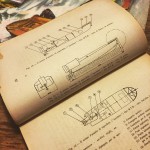 The surface division – Mezzi di Superficie – under the command of Capitano di Corvetta Giorgio Giobbe with a fleet of various explosive boats (category MT, MTM shown by the historic sketches on the left, MTR, MTS, MTMS, SMA, MTL) and motorboats for sabotage operations.
The surface division – Mezzi di Superficie – under the command of Capitano di Corvetta Giorgio Giobbe with a fleet of various explosive boats (category MT, MTM shown by the historic sketches on the left, MTR, MTS, MTMS, SMA, MTL) and motorboats for sabotage operations.
The underwater division – Mezzi Subacquei – under the command of Capitano di Corvetta Junio Valerio Borghese operated the diving School in Livorno, the SLC training base at Bocca di Serchio, the remaining transport submersibles Scirè and Ambra and the frogmen of the “Gruppo Gamma”. On a side note, in early 1941, the two initial transport submersibles for SLC devices, Iride and Gondar, were already lost with the failure of „Operazione G.A.1“ and „Operazione G.A.2“ in August and September 1940.
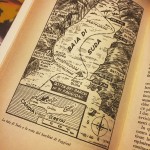 On 26 March 1941, the surface division – Mezzi di Superficie – of the Decima MAS achieved initial successes: six MT-type explosive boats broke through the blockades in Souda Bay (Crete, see historic map on the left) damaging the heavy cruiser York and the tanker Pericles.
On 26 March 1941, the surface division – Mezzi di Superficie – of the Decima MAS achieved initial successes: six MT-type explosive boats broke through the blockades in Souda Bay (Crete, see historic map on the left) damaging the heavy cruiser York and the tanker Pericles.
During the night, the servicemen Luigi Faggioni (commander), Angelo Cabrini, Tullio Tedeschi, Alessio De Vito, Lino Beccati and Emilio Barberi) were transported to the target area aboard the destroyers Crispi and Sella. These two destroyers were equipped with electrically powered cranes for placement of the MT-type explosive boats on the water, which was carried out in just a few minutes, ten miles from Souda’s entrance, at 2330 hours on 25 March 1941. Unnoticed by the enemy, the MT-type explosive boats managed to cross three barricades and reached their targets in the early hours of the morning of 26 March 1941.
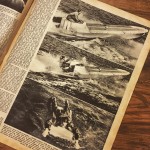 Two MT-type explosive boats attacked the York (the pilots abandoned their boats 80 meters before hitting the ship, see historic photos on the left). Another two MT-type explosive boats attacked the Pericles. Commander Faggioni tried to hit the Coventry but his boat missed the cruiser and exploded on the coast. The sixth MT-type explosive boat missed its target too, but remained intact and was captured by the British. All six pilots of the explosive boats survived the attack and became POW.
Two MT-type explosive boats attacked the York (the pilots abandoned their boats 80 meters before hitting the ship, see historic photos on the left). Another two MT-type explosive boats attacked the Pericles. Commander Faggioni tried to hit the Coventry but his boat missed the cruiser and exploded on the coast. The sixth MT-type explosive boat missed its target too, but remained intact and was captured by the British. All six pilots of the explosive boats survived the attack and became POW.
Read more about the timeline of the missions during the Second World War in chapter II.I on page 106-146. Vittorio Moccagatta is featured on page 112-113, the attack in Souda Bay is featured on page 108-109.
A lot to read during the holiday season…
by Volker on Nov.10, 2024, under Allgemein
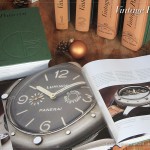 Read about watches and instruments from Guido Panerai & Figlio. Vintage Panerai watches from the 1930’s to the 1960’s are described and photographed in intricate detail for the reader, telling the stories of their first users during their dangerous underwater missions.
Read about watches and instruments from Guido Panerai & Figlio. Vintage Panerai watches from the 1930’s to the 1960’s are described and photographed in intricate detail for the reader, telling the stories of their first users during their dangerous underwater missions.
“History1” (420 pages)
“History2” (480 pages)
“The References” 1930’s-1940’s (696 pages)
“The References” 1950’s-1960’s (696 pages)
As a reference finder, as an addition to your library at home or as a special christmas gift for your friends: our Vintage Panerai books will be a great read for any Panerai collector. Each book comes with an embossed hardback jacket (leather and canvas) in a slipcase, sized 10.2 x 10.2″, trilingual (= German, Italian and English language).
Our four books are in stock and can be shipped immediately – just visit our bookstore. Use the browse by tags function to get further information about the content in each of the four books. Read how to place your order here.
Take your seat and enjoy reading!
[Ralf Ehlers & Volker Wiegmann]
Missions and Watches of the Decima MAS
by Volker on May.29, 2024, under Allgemein
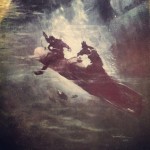 Watches from Guido Panerai & Figlio are deeply connected to the history of the Royal Italian Navy during the Second World War. In our book “The References” we have included an overview of the missions of the “Decima” aside the legendary watches, which were an important part of the units of the underwater (“Mezzi Subacquei” / “Gamma” frogmen and SLC) and surface (“Mezzi di Superficie” / explosive boats) special forces of the Decima MAS (“Mezzi d’Assalto”).
Watches from Guido Panerai & Figlio are deeply connected to the history of the Royal Italian Navy during the Second World War. In our book “The References” we have included an overview of the missions of the “Decima” aside the legendary watches, which were an important part of the units of the underwater (“Mezzi Subacquei” / “Gamma” frogmen and SLC) and surface (“Mezzi di Superficie” / explosive boats) special forces of the Decima MAS (“Mezzi d’Assalto”).
After the disaster at Malta in July 1941 (“Operazione Malta 1”), the Decima MAS was restructured. Capitano di Fregata Ernesto Forza became the new commander of the Decima MAS. The underwater division was given the name of the fallen inventor of the SLC, Teseo Tesei, now commanded by Junio Valerio Borghese. The surface division was given the name of the fallen commander of the Decima, Vittorio Moccagatta, now commanded by Salvatore Todaro (the photo below shows a historical chart of the new structured Mezzi d’Assalto as of October 1941).
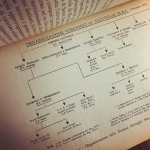 Chapter I and II of the first volume (1930’s-1940’s) carry the history of a new weapon – the SLC slow running torpedo, called “maiale” – and the men who trusted on the watches from Guido Panerai & Figlio during their dangerous missions in deep and darkness of the mediterranean sea. Because of the significance of the fascinating history behind these watches, we have dedicated our book “The References” to the inventors of the SLC, Teseo Tesei and Elios Toschi.
Chapter I and II of the first volume (1930’s-1940’s) carry the history of a new weapon – the SLC slow running torpedo, called “maiale” – and the men who trusted on the watches from Guido Panerai & Figlio during their dangerous missions in deep and darkness of the mediterranean sea. Because of the significance of the fascinating history behind these watches, we have dedicated our book “The References” to the inventors of the SLC, Teseo Tesei and Elios Toschi.
Chapter II of “The References” features some of the rarest Panerai watches owned by famous and high decorated Italian veterans. The first watch of the Reference 3646 / Type A, featured in chapter II.I, belonged to Admiral Ernesto Notari. He was awarded with the Silver Medal for Gallantry at War (M.A.V.M.) for the mission B.G.6 in May 1943.
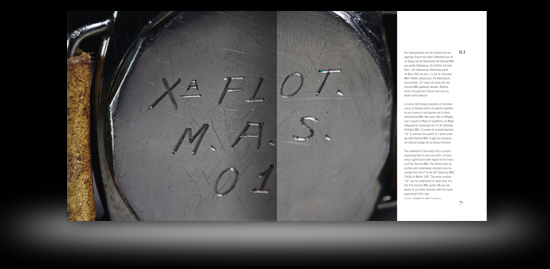
The documentation of the watch (see above page 70-71) and the history of Ernesto Notari, including a summary of the “Mezzi d’Assalto” missions until 8 September 1943 can be read from page 58 to 153 in chapter II.I.
Chapter II.II, about the watches of the Reference 3646 / Type B, features the watch of the legendary “Gamma” frogman Luigio Ferraro. He was awarded with the Gold Medal for Gallantry at War (M.O.V.M.) for his “Stella” missions in the eastern part of the mediterranean sea in 1943.
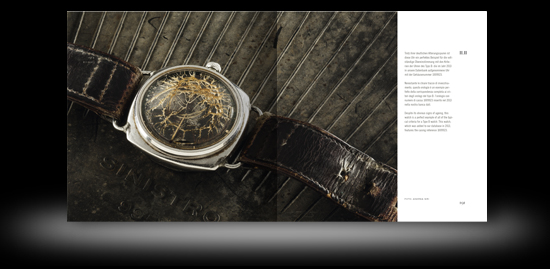
The documentation of the watch (see above page 190-191) and the history of Luigi Ferraro can be read from page 190 to 225 in chapter II.II.
A watch of the Reference 3646 / Type C which belonged to the SLC pilot Licio Visintini is featured in chapter II.III. Visintini took part in several missions against the allied fleet in Gibraltar. After surviving from mission B.G.3 and B.G.4 in 1941, Visintini returned undercover to Gibraltar in June 1942 where he built the core of the “Orsa Maggiore” on board the tanker Olterra – the hidden base for the SLC units of the “Decima” in the bay of Gibraltar. Mission B.G.5 turned into a “mission with no return” for Licio Visintini in December 1942…
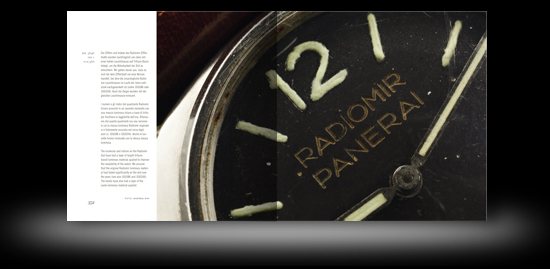
The documentation of the watch (see above page 352-353) and the history of Licio Visintini can be read from page 350 to 397 in chapter II.III.
Information on “The References” 1930’s-1940’s (first volume) can be found here.
Enjoy reading!
[Ralf Ehlers & Volker Wiegmann]
Mezzi d’Assalto
by Volker on Apr.14, 2024, under Allgemein
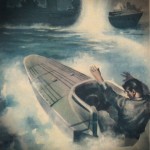 Just a few days before the first success of the MT explosive boats on 26 March 1941 in Souda Bay, the 1st MAS Flotilla changed its name and became the 10th MAS Flotilla – the Decima MAS on 15 March 1941. Capitano di Fregata Vittorio Moccagatta was the new commander and divided the special weaponry – Mezzi d’Assalto – into two divisions:
Just a few days before the first success of the MT explosive boats on 26 March 1941 in Souda Bay, the 1st MAS Flotilla changed its name and became the 10th MAS Flotilla – the Decima MAS on 15 March 1941. Capitano di Fregata Vittorio Moccagatta was the new commander and divided the special weaponry – Mezzi d’Assalto – into two divisions:
The surface division – Mezzi di Superficie – under the command of Capitano di Corvetta Giorgio Giobbe (see photo on page 115, commander Giobbe wearing clearly visible a Panerai watch on his right wrist) had a fleet of various explosive boats (category MT, MTM, MTR, MTS, MTMS, SMA and MTL) for sabotage operations, based in La Spezia.
 The underwater division – Mezzi Subacquei – under the command of Capitano di Corvetta Junio Valerio Borghese operated the diving School in Livorno, the SLC training base at Bocca di Serchio, the transport submersibles (Scirè and Ambra) and the frogmen of the “Gruppo Gamma”.
The underwater division – Mezzi Subacquei – under the command of Capitano di Corvetta Junio Valerio Borghese operated the diving School in Livorno, the SLC training base at Bocca di Serchio, the transport submersibles (Scirè and Ambra) and the frogmen of the “Gruppo Gamma”.
After the desaster at Malta in July 1941 (“Operazione Malta 1”), the Decima MAS was restructured. Capitano di Fregata Ernesto Forza became the new commander of the Decima MAS. The underwater division was given the name of the fallen inventor of the SLC, Teseo Tesei, now commanded by Junio Valerio Borghese. The surface division was given the name of the fallen commander of the Decima, Vittorio Moccagatta, now commanded by Salvatore Todaro. See page 116 with a historical chart of the new structured Mezzi d’Assalto as of October 1941:
Ernesto Notari became commander of the SLC training base at Bocca di Serchio. His Ref. 3646 / Type A “Radiomir Panerai” (with its unique engraved caseback) is documented on page 58 – 91.
Read more about the Mezzi d’Assalto on page 92 – 153 in chapter II.I of the book “The References” 1930’s-1940’s.
Naval heritage – Luigi Durand de la Penne
by Volker on Dec.25, 2023, under Allgemein
 Luigi Durand de la Penne was one of the famous SLC pilots of the Mezzi d’Assalto who wrote naval history in the Second World War. Luigi Durand de la Penne was born in Genoa, where he also died (11 February 1914 – 17 January 1992). He graduated from the Naval Academy in Livorno in 1934. He was one of the first crewmen of the 1° Gruppo Sommergibili who realized Teseo Tesei’s and Elios Toschi’s idea of a new, secret weapon in La Spezia: The SLC. At the training base Bocca di Serchio he was a member of the legendary group which founded the famous „Spirito del Serchio“.
Luigi Durand de la Penne was one of the famous SLC pilots of the Mezzi d’Assalto who wrote naval history in the Second World War. Luigi Durand de la Penne was born in Genoa, where he also died (11 February 1914 – 17 January 1992). He graduated from the Naval Academy in Livorno in 1934. He was one of the first crewmen of the 1° Gruppo Sommergibili who realized Teseo Tesei’s and Elios Toschi’s idea of a new, secret weapon in La Spezia: The SLC. At the training base Bocca di Serchio he was a member of the legendary group which founded the famous „Spirito del Serchio“.
The first remarkable milestones of his naval career was the rescue action of the transport submarine for SLC devices, the Iride: On 22 August 1940, in the Gulf of Bomba, the Iride was sunk by a torpedo released by a British Swordfish bomber. The air attack happened during an exercise, in shallow water, when four SLC teams were around, including the officers Teseo Tesei, Gino Birindelli and Luigi Durand de la Penne. They started an immediate rescue action. Of the 12 Iride crewmen who survived, two died during an unsuccessful attempt to surface, nine were retrieved alive (two of them died soon, due to wounds), and one was too shocked to leave the sunken submarine. Luigi Durand de la Penne tried to persuade him to surface, and even gave him his own rebreather, but the seaman refused surfacing and died.
Page 1016 – 1017: “Uomini della prima ora” – spring 1940 – before the mission G.A.1 failed dramatically. Luigi Durand de la Penne (3rd from left) together with the commanders of the 1st MAS Flotilla (Aloisi and Giorgini), surrounded by Stefanini, Bertozzi, Falcomatà, Tesei, Birindelli and Centurione.
The second milestone in Luigi Durand de la Penne’s naval career was the sinking of the British battleship Valiant. In December 1941, he was one of the “fab six” (Emilio Bianchi, his co-pilot; Antonio Marceglia with Spartaco Schergat and Vincenzo Martellotta with Mario Marino) that attacked the Port of Alexandria. As a result, four ships were disabled: the British battleships HMS Queen Elizabeth and HMS Valiant, the oil tanker Sagona and the destroyer HMS Jervis. Luigi Durand de la Penne was awarded the M.O.V.M. (the Italian highest military decoration awarded for valour “in the face of the enemy”). At the end of the war, Admiral Charles Morgan (the Valiant’s Captain at the time of the attack in Alexandria) wanted to confer himself the medal to Luigi Durand de la Penne in a ceremony in Taranto.
Page 122 – 123: Illustration of the mission G.A.3 on 18/19 December 1941 in the Port of Alexandria.
After 8 September 1943, Luigi Durand de la Penne was offered the opportunity to be released from prison and fight for the Allies. He accepted and returned to duty as a frogman. In June 1944, he participated in a joint Italian/British operation against the Germans (mission QWZ). A team of British and Italian divers sank the cruisers Gorizia and Bolzano before they could be used to block the harbour entrance. After the Second World War, Luigi Durand de la Penne stayed in the Marina Militare. He was promoted to Capitano di Fregata in 1950 and Capitano di Vascello in 1954. In 1956 he was appointed as Naval Attaché in Brazil.
Luigi Durand de la Penne‘s family donated decorations he was awarded during his career, and his Panerai watch to the museum at the COMSUBIN headquarters in Varignano / La Spezia. The Panerai watch, a Ref. 3646 / Type C with “Radiomir Panerai” dial has been recorded in our database in 2015. Enjoy reading more: Luigi Durand de la Penne M.O.V.M. is featured in chapter I (page 35), chapter II.I (page 94-123) and VIII.II (page 1016-1034) of our two “The References” books.
Ref. 3646 / Type C “Radiomir Panerai” @ Dr. Crott
by Volker on Apr.15, 2022, under Allgemein
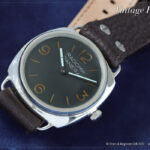 We recently added another unknown watch into our database – yet another piece of the puzzle surfaced: a Ref. 3646 / Type C with “Radiomir Panerai” sandwich dial, being watch #63 in our records of watches matching the criteria of the 3646 / Type C.
We recently added another unknown watch into our database – yet another piece of the puzzle surfaced: a Ref. 3646 / Type C with “Radiomir Panerai” sandwich dial, being watch #63 in our records of watches matching the criteria of the 3646 / Type C.
The Ref. 3646 / Type C “Radiomir Panerai” will be auctioned on 21 May 2022 at Dr. Crott’s 106th auction in Mannheim/Germany. It has been consigned by the family of the German “Kampfschwimmer” veteran Heinz Greten. Further info on auction lot 156 can be found here.
The watch appears with an unpolished case with a matching high bezel, typical for watches with “Radiomir Panerai” sandwich dial. The watch comes with a tubular shaped Rolex Oyster crown (Type 13). Inside the watch is a Rolex Cal. 618 / Type 1 movement with typical decorations and engravings on the bridges (ROLEX 17 RUBIS / FAB. SUISSE). The inner caseback bears the typical Rolex SA hallmark, reference and case number known for 3646 / Type C watches, with “Half Polish” decoration. Both hands appear black painted and re-lumed. The inner caseback bear also watchmakers’ service marks.
 Noteworthy:
Noteworthy:
The outer caseback of the watch bear engravings of the first owner, German “Kampfschwimmer” Petty Officer Hans Greten with the additional info Antwerpen, referring to a mission he took part in September 1944.
The mission (“Operation Bruno” – the attack of the Kruisschans floodgates in Antwerp) is documented in the book “Sabotage unter Wasser” written by Michael Jung (2004) on page 120-121, as well as a photo of Hans Greten on page 107. Further info on this frogmen mission is also found in the book “Das Kommando der Kleinkampfverbände der Kriegsmarine” written by Helmut Blocksdorf (2003), on page 181. The earliest documentation of the mission is dating back to 1956 in the book “…denn sie liebten doch das Leben” written by Cajus Bekker (chapter six, page 148-160), in which Greten is mentioned several times (all books are written in German language).
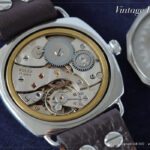 Features of the watch:
Features of the watch:
Reference: 3646 / Type C
Dial: “Radiomir Panerai” (sandwich)
Case number: 10102XX
Movement: Rolex Cal. 618 / Type 1
In our book “The References” 1930’s-1940’s the watches of the entire reference 3646 are featured in chapter II with more than six hundred pages in the chapters II.I-II.VII. The seven different variations (including the number group 3646 / Type C – page 248-397 – to which this watch belongs) can be found in our reference quickfinder on page 14-20.
Please note that the very rare campaign insignia 3rd degree (visible in the background of the second photo) is the (separate) lot 155 and is not included in the lot of the watch. Information on different probation and campaign insignia of the German “Kampfschwimmer” units can be found in our book “History2” in chapter IX.
We hope the watch will find a good new home and that it remain surfaced in the Vintage Panerai collectors world. [Ralf Ehlers & Volker Wiegmann]
A Ref. 3646 / Type E with brass dial
by Volker on Sep.12, 2021, under Allgemein
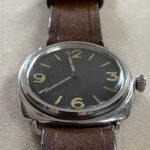 Introducing another Ref. 3646 / Type E watch which surfaced in Germany – this specimen appeared with painted brass dial.
Introducing another Ref. 3646 / Type E watch which surfaced in Germany – this specimen appeared with painted brass dial.
Noteworthy is the well preserved original strap and “Bottle Opener” buckle, wich most of today’s surfacing watches don’t have anymore.
The “Kampfschwimmer” watch with anonymous painted brass dial has an unpolished case with a matching flat bezel. The onion shaped winding crown (“BREVET +” Type 11) can be screwed down onto the collar of the 47 mm cushion shaped case with soldered lugs.
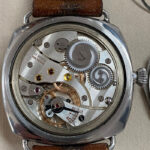 Features of the watch:
Features of the watch:
Reference: 3646 / Type E
Dial: “Kampfschwimmer” (painted brass, anonymous)
Case number: 2608XX
Movement: Rolex Cal. 618 / Type 1 mod.
Inside the watch is a Rolex Cal. 618 / Type 1 mod. movement with typical decorations and engravings on the bridges (17 RUBIS / FAB. SUISSE). The blued steel hands appear untouched with original luminous material. The inner caseback is decorated with half polish. An overview of different decorative polish on the inside of the caseback (Type A – Type G) can be found on page 486 in our book “The References” 1930’s-1940’s.
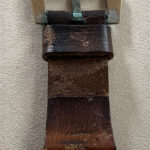 Find more info on straps and buckles here. More info on Ref. 3646 watches without Rolex hallmarks can be found here. More info on Ref. 3646 watches with brass dials can be found here.
Find more info on straps and buckles here. More info on Ref. 3646 watches without Rolex hallmarks can be found here. More info on Ref. 3646 watches with brass dials can be found here.
Here we added another unknown watch into our database – yet another piece of the puzzle surfaced. Thanks to the collector who shared the photos and information with us!
A Ref. 3646 / Type E watch surfaced in New Zealand
by Volker on Sep.07, 2021, under Allgemein
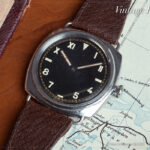 Webb’s auction house from Auckland / New Zealand contacted us recently, providing information and photos of a yet unknown Ref. 3646 / Type E with “California Dial”. The watch appears with the matching flat bezel and both lead seals above and below the 47 mm cushion shaped case. The outer caseback is not engraved and the inner caseback is missing the Rolex hallmark and reference number, which is a typical feature of Ref. 3646 / Type E watches. The onion shaped winding crown (“BREVET +” Type 11) can be screwed down onto the collar of the 47 mm cushion shaped case with soldered lugs.
Webb’s auction house from Auckland / New Zealand contacted us recently, providing information and photos of a yet unknown Ref. 3646 / Type E with “California Dial”. The watch appears with the matching flat bezel and both lead seals above and below the 47 mm cushion shaped case. The outer caseback is not engraved and the inner caseback is missing the Rolex hallmark and reference number, which is a typical feature of Ref. 3646 / Type E watches. The onion shaped winding crown (“BREVET +” Type 11) can be screwed down onto the collar of the 47 mm cushion shaped case with soldered lugs.
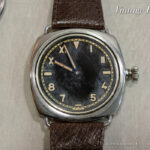 The “Error-Proof Radium Dial” by Rolex, with its railroad track minute markers and “SWISS MADE” signature at six o’clock, features half arabic and half roman numbers with luminous material applied from above.
The “Error-Proof Radium Dial” by Rolex, with its railroad track minute markers and “SWISS MADE” signature at six o’clock, features half arabic and half roman numbers with luminous material applied from above.
Since 2016, five new watches of the number group Ref. 3646 / Type E surfaced, two of them expanded the number group from 260856 – 261097 (as of 1.1.2016) to 260850 – 260111. We have 31 Ref. 3646 / Type E watches recorded as of today, including this specimen from New Zealand.
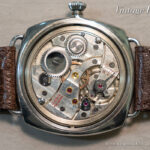 Features of the watch:
Features of the watch:
Reference: 3646 / Type E
Dial: “California Dial”
Case number: 2609XX
Movement: Rolex Cal. 618 / Type 1 mod.
You can read more about Ref. 3646 watches with dissappeared Rolex hallmarks here.
[Photos with kind permission / courtesy of www.webbs.co.nz]
Ref. 3646 / Type D with brass dial @ Dr. Crott
by Volker on Aug.26, 2021, under Watch Point
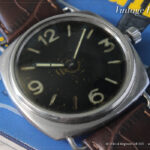 We recently added another unknown watch into our database – yet another piece of the puzzle surfaced, which marks the Ref. 3646 / Type D #104 in our records. The “Kampfschwimmer” watch with anonymous painted brass dial appears with an unpolished case with a matching flat bezel. The original winding crown has been replaced.
We recently added another unknown watch into our database – yet another piece of the puzzle surfaced, which marks the Ref. 3646 / Type D #104 in our records. The “Kampfschwimmer” watch with anonymous painted brass dial appears with an unpolished case with a matching flat bezel. The original winding crown has been replaced.
Watches of the Reference 3646 / Type D are featured in our book “The References” 1930’s-1940’s in chapter II.IV (page 398-531) including a historic photo of a “Kampfschwimmer” wearing a 3646 with brass dial on page 475. Brass dialed Ref. 3646 / Type D are featured on page 468-493. In this part of the book, an overview of different decorative polish on the inside of the caseback (Type A – Type G) can be found on page 486.
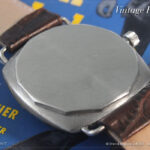 The caseback of the watch is not engraved. However, a handwritten note from the son of the “Kampfschwimmer” explains that his father completed his training in Bad Tölz at Lehrkommando 702. You can read more about the training site Bad Tölz and the Lehrkommando 702 in our book “History2” on page 660-662 and 789-795.
The caseback of the watch is not engraved. However, a handwritten note from the son of the “Kampfschwimmer” explains that his father completed his training in Bad Tölz at Lehrkommando 702. You can read more about the training site Bad Tölz and the Lehrkommando 702 in our book “History2” on page 660-662 and 789-795.
The watch will be up for auction on November 13, 2021 at Dr. Crott’s 105th auction in Mannheim.
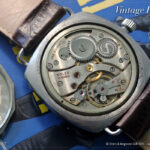 The inner caseback bears the typical Rolex SA hallmark, reference and case number known for 3646 / Type D watches. Inside the watch is a Rolex Cal. 618 / Type 1 movement with typical decorations and engravings on the bridges (ROLEX 17 RUBIS / FAB. SUISSE).
The inner caseback bears the typical Rolex SA hallmark, reference and case number known for 3646 / Type D watches. Inside the watch is a Rolex Cal. 618 / Type 1 movement with typical decorations and engravings on the bridges (ROLEX 17 RUBIS / FAB. SUISSE).
Features of the watch:
Reference: 3646 / Type D
Dial: “Kampfschwimmer” (painted brass, anonymous)
Case number: 2607XX
Movement: Rolex Cal. 618 / Type 1
We hope that this Ref. 3646 / Type D with brass dial will find a good new home and remains surfaced in the Vintage Panerai collectors world. [Ralf Ehlers & Volker Wiegmann]
#solderedlugsunday
by Volker on Jan.24, 2021, under Allgemein
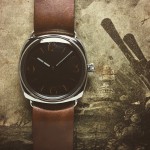 More than two hundred watches of the Reference 3646 are registered in our database today. Among all different Vintage Panerai models, the 3646 marks the reference with the most known specimen in our records. In 2009, 143 recorded watches were featured in the first (sold out) edition of our book “The References”. Within the entire serial number sequence of the reference 3646, we differentiate between seven different variations (3646 / Type A – Type G). The photo on the left shows a Ref. 3646 / Type D with anonymous “Kampfschwimmer” dial, which is featured in chapter II.IV (page 454-467).
More than two hundred watches of the Reference 3646 are registered in our database today. Among all different Vintage Panerai models, the 3646 marks the reference with the most known specimen in our records. In 2009, 143 recorded watches were featured in the first (sold out) edition of our book “The References”. Within the entire serial number sequence of the reference 3646, we differentiate between seven different variations (3646 / Type A – Type G). The photo on the left shows a Ref. 3646 / Type D with anonymous “Kampfschwimmer” dial, which is featured in chapter II.IV (page 454-467).
In our book “The References” 1930’s-1940’s the watches of the entire reference 3646 are featured in chapter II with more than six hundred pages in the chapters II.I-II.VII following an intro on page 40-49. The seven different variations (3646 / Type A – Type G) can be found in our reference quickfinder on page 14-20.
Chapter II.I = Reference 3646 / Type A
(featuring two different watches on page 50-169).
Chapter II.II = Reference 3646 / Type B
(featuring four different watches on page 170-247).
Chapter II.III = Reference 3646 / Type C
(featuring seven different watches on page 248-397).
Chapter II.IV = Reference 3646 / Type D
(featuring nine different watches on page 398-531).
Chapter II.V = Reference 3646 / Type E
(featuring four different watches on page 532-573).
Chapter II.VI = Reference 3646 / Type F
(featuring two different watches on page 574-607).
Chapter II.VII = Reference 3646 / Type G
(featuring two different watches on page 608-645).
Since January 2016, a total of 17 watches of the Ref. 3646 / Type D have been added into our database until the beginning of February 2019. Seven of them surfaced with anonymous “Kampfschwimmer” dials, ten of these 17 watches surfaced with painted brass dials.
All new additions are inside the number group 260408-260873, representing the watches of the Ref. 3646 / Type D. Added to the 79 watches we had in our records in January 2016, the total number of Ref. 3646 / Type D watches in our database is actually counting 103 specimen.
Our “The Reference” books are available in our bookstore. Enjoy reading!

